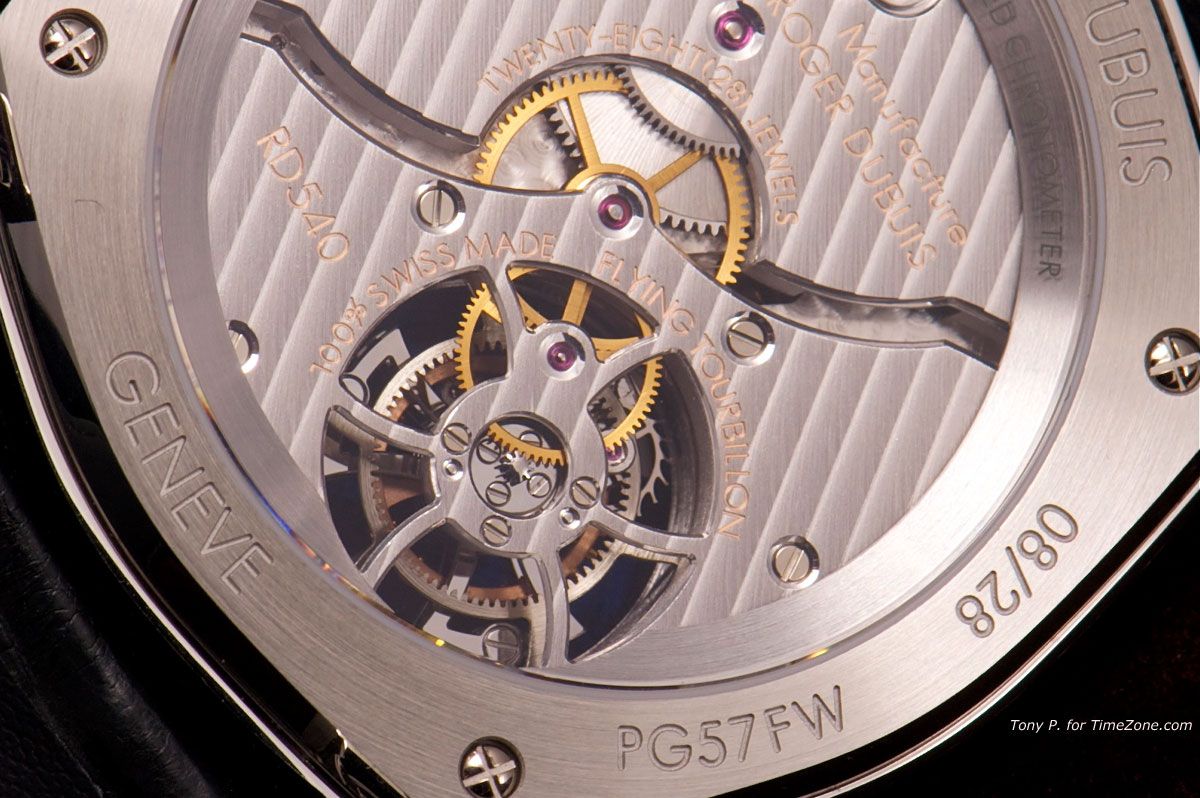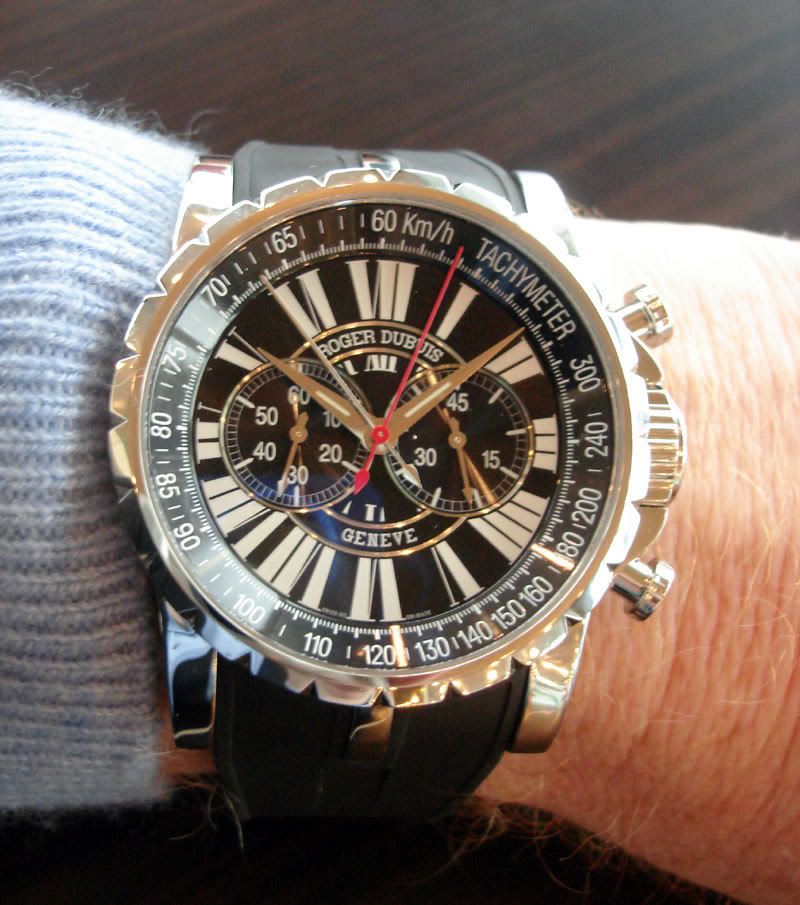Recently the abrupt departure of the CEO of Rolex, Bruno Meier, after a short time running the firm, caused some consternation in the Blogosphere, however (as normal) I choose to disagree.
I believe that the big news is not the departure of Mr. Meier after such a short period at the helm, neither is it the arrival of his replacement, Mr. Marini (until recently, the head of Rolex Italy); rather it is the creation of a new post; that of Head of Overseas Sales.
The new job will be taken by Daniel Neidhart (until recently based in HK, where he ran the China market for the firm); what is important is that Mr. Marini is 64 years old, and therefore unlikely to be in the job for long, whilst Mr. Neidhart is a stripling of 48. Mr. Neidhart was born in Hong Kong & will now move to Geneva, insiders see this move as the appointment of heir apparent.
In probably his best play "The Importance of Being Ernest", WIlde has Lady Bracknell say "To lose one parent, Mr Worthing, may be regarded as a misfortune; to lose both looks like carelessness."
Pretty much what you could say about Rolex right now; for a company who prided themselves on having only three CEOs in 103 years, to lose two CEOs in a couple of years seems to be almost anarchic.
What is important is that the changes indicate a reversion to type at Rolex; historically the CEO has been a lifetime Rolex person & (crucially, in my opinion) has come from the marketing side of the company. Whilst some might like to think of Hans Wilsdorf as an inventor or watchmaker, he was neither, in all his official documents Wilsdorf described himself as a "Merchant"; the nearest word in his days to what we would now call a Marketer. His successor Andre Heiniger, although trained as a lawyer, spent most of his early life as the head of sales for Rolex South America. During the dark days of WWII, South America was the only profitable area for Rolex (and other Swiss watch companies), being both peaceful & working flat out to supply the combatants with raw materials.
Andre's son, Patrick, who succeeded him; was a major marketer who will be remembered for his far sighted ideas of linking Rolex in with major sporting events but whose lasting legacy will be his decision to consolidate the 27 factories around Geneva into three huge plants and in so doing, become almost 100% self sufficient.
What joined all three was that they were all lifetime Rolex marketing guys, and so steeped in the culture & ideology of the company.
Bruno Meier, was a banker by training & spent almost all his life working in that field, his appointment as Finance Director at Rolex lasted only three years until he was promoted to CEO. The two new guys at the top of the company are both long time Rolex employees and, interestingly, both marketers. In essence, what we are seeing at Rolex is a reversion to type, with one marketer with 40 years experience at the company being brought in as a 'safe pair of hands' to smooth the transition to younger guy who can be expected to be at the helm of the firm for a decade or more.
The new job will be taken by Daniel Neidhart (until recently based in HK, where he ran the China market for the firm); what is important is that Mr. Marini is 64 years old, and therefore unlikely to be in the job for long, whilst Mr. Neidhart is a stripling of 48. Mr. Neidhart was born in Hong Kong & will now move to Geneva, insiders see this move as the appointment of heir apparent.
In probably his best play "The Importance of Being Ernest", WIlde has Lady Bracknell say "To lose one parent, Mr Worthing, may be regarded as a misfortune; to lose both looks like carelessness."
Pretty much what you could say about Rolex right now; for a company who prided themselves on having only three CEOs in 103 years, to lose two CEOs in a couple of years seems to be almost anarchic.
What is important is that the changes indicate a reversion to type at Rolex; historically the CEO has been a lifetime Rolex person & (crucially, in my opinion) has come from the marketing side of the company. Whilst some might like to think of Hans Wilsdorf as an inventor or watchmaker, he was neither, in all his official documents Wilsdorf described himself as a "Merchant"; the nearest word in his days to what we would now call a Marketer. His successor Andre Heiniger, although trained as a lawyer, spent most of his early life as the head of sales for Rolex South America. During the dark days of WWII, South America was the only profitable area for Rolex (and other Swiss watch companies), being both peaceful & working flat out to supply the combatants with raw materials.
Andre's son, Patrick, who succeeded him; was a major marketer who will be remembered for his far sighted ideas of linking Rolex in with major sporting events but whose lasting legacy will be his decision to consolidate the 27 factories around Geneva into three huge plants and in so doing, become almost 100% self sufficient.
What joined all three was that they were all lifetime Rolex marketing guys, and so steeped in the culture & ideology of the company.
Bruno Meier, was a banker by training & spent almost all his life working in that field, his appointment as Finance Director at Rolex lasted only three years until he was promoted to CEO. The two new guys at the top of the company are both long time Rolex employees and, interestingly, both marketers. In essence, what we are seeing at Rolex is a reversion to type, with one marketer with 40 years experience at the company being brought in as a 'safe pair of hands' to smooth the transition to younger guy who can be expected to be at the helm of the firm for a decade or more.



















